SUMMARY
This is AI generated summarization, which may have errors. For context, always refer to the full article.
![[Ilonggo Notes] Soaked in history: The Jaro Circle](https://www.rappler.com/tachyon/2021/05/jaro-plaza-TL.png)
If you stand in the middle of Jaro Plaza and then walk 200 meters or so in any direction, you will encounter an amazing variety of heritage buildings, shrines, and homes of national heroes; an imposing, towering belfry and cathedral; colonial Spanish, art deco, and neoclassic architecture; mansions of sugar barons; pioneering educational institutions; and local delicacies known throughout the country. This is the Jaro Plaza heritage zone, as declared by Republic Act 10555 (2010).
Jaro has a rich history. It once had one of the biggest markets in the country, selling the finest embroidery, pottery, and crafts. Relegated to being a district of Iloilo City since 1940, it was larger and more prosperous in the 1850s until the early American era, and was at various times a city or a separate municipality.
Many of the sugar planters and millers of Negros Island had their family homes in Jaro, and from this mestizo stock arose the most prominent entrepreneurs of the country – the Lopez, Montinola, and Ledesma families, among others. The very first “millionaires row” in the country was in Jaro; the first concrete road in the country connected the Jaro Plaza to the Forbes Bridge, which spanned the Iloilo River.
Cathedrals and carnivals
Right ahead, peeking through the treetops, is the 30-meter-tall belfry, unique in being located about 50 meters away from the church. It was damaged by a massive earthquake in 1948 and partly restored in the 1990s. Cross the street to the Romanesque-style cathedral, seat of the Archdiocese of Jaro. First constructed in the 1860s and renovated in 1956, it is known for its array of all-male saints lining the aisle, and for the devotee, the image of the Candelaria, or “Our Lady of the Candles.” Ascend two flights of stairs on the cathedral’s façade to view the image, which some swear has grown in size over the years.
The Jaro Fiesta, celebrated every February 2, is fabled far and wide for its opulence and the crowning of the Jaro Carnival Queen, a much coveted title. The fete spurs Jaroeños from all over the world to return, trace their roots, and bet at the cockfights, which draw the country’s top aficionados.
To the immediate left of the cathedral are several mansions belonging to prominent families. There is the Lopez Vito Mansion, with a commercial bank on its ground floor. Behind it is the Locsin home. Both are in the style of bahay na bato, with huge sliding windows and characteristic ventanillas.
Two blocks away at the back the cathedral is the public market, famed for its Huwebesan – the Thursday market day. At the end of the short street on the right is the Seminario de Jaro – established in 1869 to train men for the priesthood, the earliest institution for higher learning in the Western Visayas. Prominent alumni are the national hero Graciano Lopez-Jaena, Generals Martin Delgado and Quintin Salas, Justices Ramon Avancena and Delfin Jaranilla, and Jaime Cardinal Sin.
Beautiful homes
At one street corner facing the plaza, the neoclassic Ledesma mansion, now unfortunately decaying and listing slightly to one side, holds court. Across this street and bordering the plaza on the left is the simple, almost austere, Jaro Evangelical Church – the first Baptist church established in the country.
A few steps away, the Archbishop’s palace, built in the late 1940s by Juan Nakpil, stands with its open balcony, from where popes have blessed the faithful. It is at the southeast corner across the plaza, on Commission Civil Street. Walk away from the palace going south and you reach the ancestral home of Magdalena Jalandoni, the first Philippine Republic Cultural Heritage Awardee for Literature. The house is distinctive for its colored windows and turret. Farther on is the birthplace of the patriot Patrocinio Gamboa, whose exploits include smuggling the Philippine flag under her skirts, under the noses of Spanish militia, so that it could be raised by General Martin Delgado and the revolucionarios in the town of Santa Barbara in 1898. A museum of 19th century Jaro history and lifestyle is on the second floor of the residence, and hopefully will re-open again.
Walking back, at the east of the plaza are several other houses of old rich families, though their front yards have now been converted into commercial spaces. At the northeast end stands a classic of Filipino art deco architecture – the former Jaro Municipal Hall, designed by Juan Arellano in 1928. It served as a police station before it was donated by the city to the National Museum in 2014, for preservation and renovation as its regional office.
A few meters from the back of the building is the American-era Concepcion chalet, with its expansive porch and carved wooden filigrees. Enter Isabel Street on your left for Casa Mariquit, built in the early 19th century, possibly one of the oldest houses in the country. It was the home of Mariquit Javellana, wife of former vice president Fernando Lopez. Both once lived here; it showcases personal memorabilia of the couple and the work desk of the former three-term vice president.
Historical figures
After exiting, turn right on the main street, then walk a block north to Fajardo Street, to the birthplace of Graciano Lopez-Jaena. It is a national shrine with a historical marker. A library and resource center is being constructed on the site.
Graciano Lopez-Jaena is the pre-eminent Filipino orator, propagandist, and journalist who founded the La Solidaridad newspaper in Spain in the 1880s – a firebrand who was a leader of the Filipino Independence movement together with Jose Rizal and Del Pilar. His birthday, December 20, is a holiday in Iloilo. Sadly, he did not live to see the Philippines liberated, dying of tuberculosis at 42 in 1898. He is buried in a common grave in a Barcelona cemetery.
Returning to the plaza via a side street, you will see the well-preserved Arguelles building (1927) at the corner, with its ornate façade, Corinthian pillars, and series of balconies. Just behind it is a magnificent art deco home, which is currently unoccupied and partly boarded up. The owner of this house was once entrusted with an infant who was left on the steps of the Jaro Cathedral by an unknown person. That foundling was subsequently adopted by Filipino film superstar couple Fernando Poe Jr. and Susan Roces, and named Grace.
You can then cross the road and return to the Jaro Plaza via a 1927-era art deco arch, where a statue of the Virgin welcomes visitors. Roam around the rest of the plaza, which also boasts of a 1920s-era bandstand, monuments to Graciano Lopez-Jaena and Patrocinio Gamboa, a Marian shrine, several tacky dinosaur statues, and a memorial to war veterans.
The whole walkabout may take two to three hours. A few other places are short rides away, such as the Lizares mansion with the Angelicum School; Nelly Gardens, the acknowledged queen of all the palatial homes in Jaro; and the Sanson-Montinola Antillian House. Right beside the latter is the Colegio de San Jose, a school founded by the Daughters of Charity in 1872 – the oldest school for girls in Western Visayas. A kilometer north is Central Philippine University, founded by American Baptists in 1905; its college of nursing is the first in the country.
Foodie delights
Food choices abound in the area: Pat Pat’s kansi (Ilonggo-style beef soup soured with batwan fruit) in a heritage house near the seminary, with the Bavaria German restaurant beside it. The famed Biscocho Haus (buttered biscocho de Jaro and butterscotch) is near Casa Mariquit. The century-old Panaderia de Paa pan de sal haven is a few doors away. Try the mamon tostado and barquillos at Deocampo’s on Sta. Isabel Street; they originated this tube-shaped wafer in the 1890s. Outstanding La Paz batchoy is served at Alicia’s, while Ted’s has a branch opposite the Arguelles building. The Ledesma mansion even hosts a small stand selling special bibingka. Fifty meters away, creative displays and billowing curtains beckon at Wawa, the designer and artist PJ Aranador’s slow-food restaurant-atelier.
After all that food, walk over to the Robinson’s Mall to shop, and your day in Jaro is complete! – Rappler.com
Vic Salas is a physician and public health specialist by training, and now retired from international consulting work. He is back in Iloilo City, where he spent his first quarter century.
Voices features opinions from readers of all backgrounds, persuasions, and ages; analyses from advocacy leaders and subject matter experts; and reflections and editorials from Rappler staff.
You may submit pieces for review to opinion@rappler.com.
Add a comment
How does this make you feel?
![[OPINION | Ilonggo Notes] Want to be an #Esplanaddict?](https://www.rappler.com/tachyon/2021/02/TL-iloilo-river-esplanades-February-19-2021.jpg?fit=449%2C449)
![[Ilonggo Notes] The joys of solitary biking, and birth pangs of a bike-friendly city](https://www.rappler.com/tachyon/2021/03/biking-tl.jpg?fit=449%2C449)
![[Ilonggo Notes] A community-based approach to HIV in Western Visayas](https://www.rappler.com/tachyon/2021/04/tl-hiv-self-test-kit.jpg?fit=449%2C449)
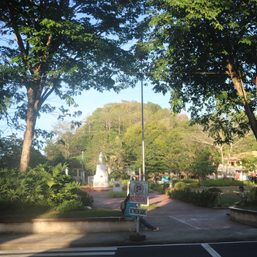
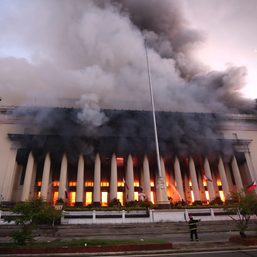
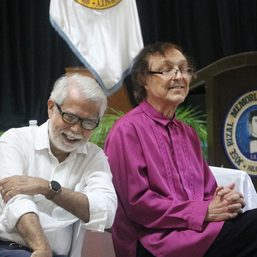

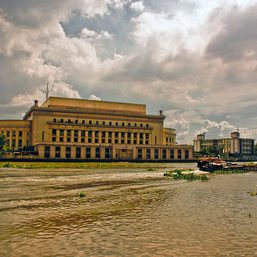
![[Ilonggo Notes] Putting the spotlight on Ilonggo and regional cinema](https://www.rappler.com/tachyon/2024/04/Screenshot-2024-04-07-at-2.04.59-PM.png?resize=257%2C257&crop=321px%2C0px%2C809px%2C809px)


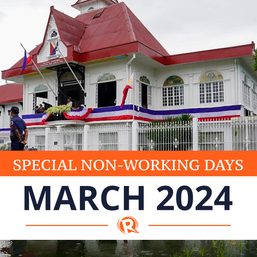





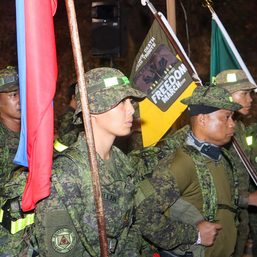
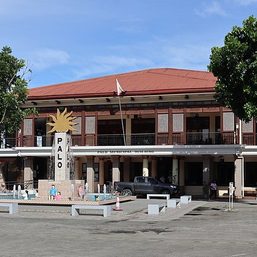

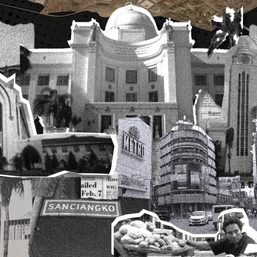
There are no comments yet. Add your comment to start the conversation.